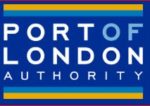Trip and Session Guidelines
CKC organises trips and expeditions, and uses a grading system to indicate the paddler standard required for these trips, as well as to indicate the types of paddling that may be encountered. While the club tries to be as clear as possible for each grading, you should note that these are indicative and for guidance only. On Club Led Paddles, on any trip the leader has the final say on how things are run and who gets to paddle. (Club Led paddling has a designated, and qualified leader working within their remit).
Club Peer Paddles, are activities promoted by individual members to the club and not offering leadership on the water beyond that found in a peer group situation. Individuals are self-reliant and competent to paddle the proposed / anticipated conditions. It is for every individual to assess their own plan, ability and equipment. Peer Group Paddling is very distinct from Club/External Led Paddling. There is no designated leader. A trip organiser may co-ordinate the logistics. These trips are restricted to people at Sea Kayak Award (3*) level or above.
It is not a requirement that individuals hold the Paddle UK or British Canoeing (BC) Award certificates indicated. Although the Paddle UK awards are generally a positive thing to have, here they are used as a general indication of the level of proficiency required for each grade. The intention is to help paddlers progress their paddling skills and identify suitable trips. However all Club members – regardless of ability – must demonstrate their ability to perform a deep water assisted rescue at least every two years.
There are, however, no hard and fast rules as everyone progresses at different rates. Neither is there a fixed progression where the next level is reached when a particular trip is completed. The jump in skill level is more marked between the higher levels and most paddlers will need to do many trips at each level to demonstrate that they are confident and competent before moving up. Three other factors that will also contribute to your rate of progression: how often you paddle, your level of paddle fitness and the variety of trips you go on.
Please contact the trip leader to confirm your place and discuss the trip’s suitability for you. There will be people who want to push their paddling skills on by trying a level above where they have been before and this is fine as long as the trip leader is happy with this.
Remember, the trip leader has the final say on whether a trip goes ahead or not, how things are run and who gets to paddle.
| Grade A – Paddle UK Discover Award |
|---|
| Skill Level Trips are suitable for all, including beginners. However, you must have practiced capsizing (deep water assisted rescues) without panicking and be able to get back into your boat with help. Paddle in straight line, stop and turn. Able to paddle up to about 6 nm or 3 hours, with breaks. Willingness to take advice from the trip leader and to follow instructions quickly in event of an incident is crucial. Understand and use elements of ‘CLAP’ principles: Communication: keep within earshot and watch for non-verbal communication; Line of sight: stay within sight and look around and behind frequently; Avoiding problems: look ahead rather than reacting after the event; Positioning yourself: where you can be most useful to other members of the group. Conditions Sheltered water, river, harbour or coastal trip. Wind: F0-F3 (ie moderate breeze up to 15mph). Minimal tidal effects. |
| Grade B – Paddle UK Explore Award |
|---|
| Skill Level All the skills from Grade A plus: Capsize and assisted deep water rescue, including keeping a clear head and keeping hold of boat and paddle at all times. You are not required to be able to roll or self-rescue. Be able to paddle a distance of 6-12 nm in light winds. Theory Some basic knowledge of tides (high water, low water, spring and neap tides), weather forecasts including wind speed and direction and buoyage. Conditions Sheltered water, possibly short crossings involving being no more than 800m offshore. Wind: F0 – F3 (ie, moderate breeze up to 15mph). Maximum tidal currents of about 2 knots, slightly choppy seas, plenty of opportunity for landing and resting. |
| Grade C – Paddle UK Sea Kayak Award |
|---|
| Skill Level All the skills from Grade B plus: Ability to control your boat in choppy seas – facing the waves, broadside and with a following sea; able to edge and use bracing strokes; ability to paddle 12-18 nm, including open crossings up to 2nm, while dealing with possibly strong winds and tides. You should be able to help others in difficulty, perform deep water assisted and self rescues in 0.5m waves; tow and be towed. Swimming the boat away from obstacles, keeping a clear head and directing others from the water. Ability to roll desirable. Launch and landing in light surf (up to 0.5m) or on wave swept beaches and jetties. Demonstrate good CLAP awareness (Communication, Line of Sight, Avoidance, Positioning). Expedition skills: Understanding what to take in your boat and how to pack it most effectively for the conditions and trip. Theory Ability to use maps, charts, tidal and weather data to undertake coastal navigation. You should be aware of buoyage and local regulations and how to interact with other vessels. Knowledge of tides, tidal streams, weather forecasts for coastal navigation and tidal planning. Knowledge of basic first aid., including CPR. Conditions Exposed water, possibly longer crossings and being more than 800m offshore. Wind: F0-F4 (ie moderate breeze up to 18 mph). Stronger tidal streams (2-3 knots). Landing and launching through surf up to 0.5m. |
| Grade D – Paddle UK Coastal Sea Kayak Award |
|---|
| These trips are for experienced paddlers who are capable of looking after themselves in fairly testing conditions. These trips may well extend beyond the technical BC Coastal Sea Kayak Award remit. Skill Level All the skills from Grade C plus: Essential that you can roll, self-rescue, tow and assist others in ‘moderate’ seas (1 – 2.5M waves); ability to paddle in strong winds F4+ and strong currents (3 knots+), to land safely on rocky shores or in surf (up to 1m). Have the stamina and the mental attitude to paddle 20nm. Theory Good navigational skills. Able to use charts, maps, weather and tidal data to plan and undertake open water navigation. You will know how to use flares, VHF, PLB/EPIRB and how to call for assistance. Conditions Wind: F0-F5 Open crossings more than 2nm. Strong tides (3 knots+) and overfalls. Tide races and surf. |


